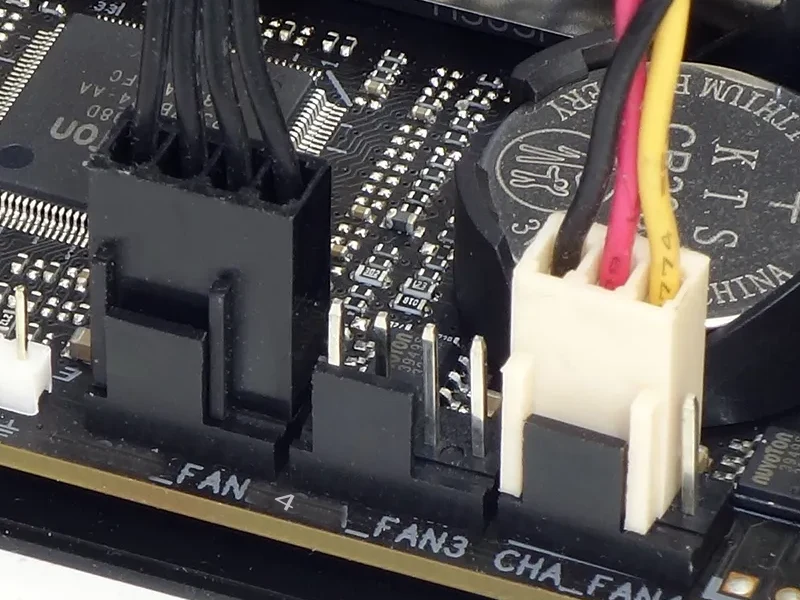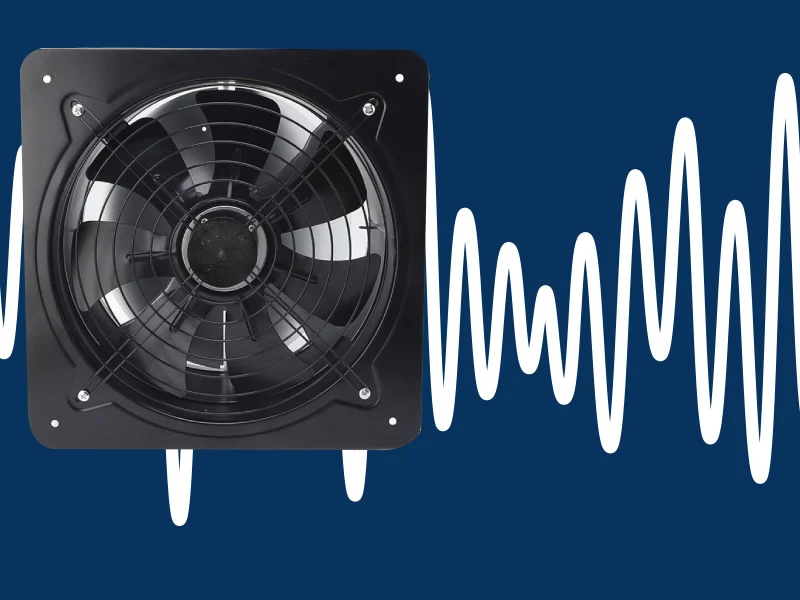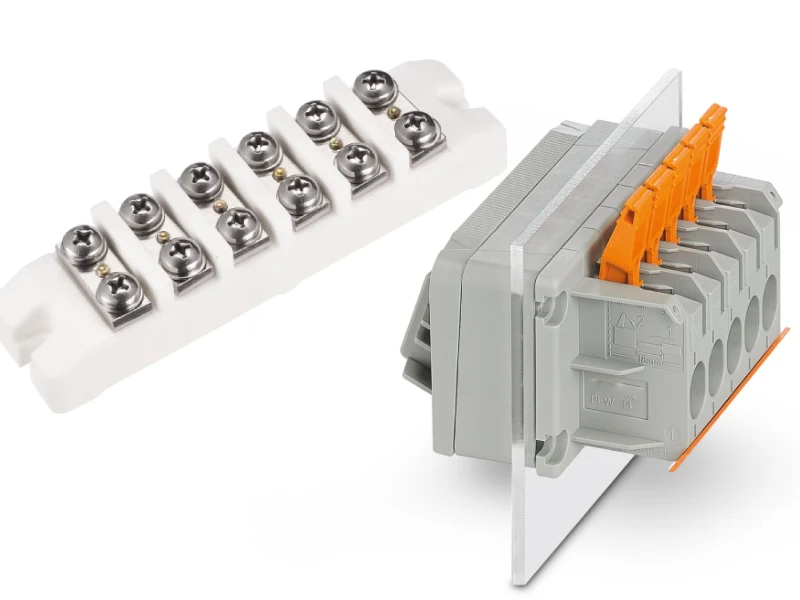An air conditioner condenser fan sits at the heart of your outdoor ac unit and plays a big role in keeping your space cool. This fan pulls air through the condenser coils and pushes heat out, making sure your system works smoothly. When you understand how the air conditioner condenser fan works, you can spot issues early and keep your cooling strong.
You might not realize it, but the efficiency of your air conditioner condenser fan can make a real difference:
- A more efficient air conditioner condenser fan helps cut energy use, since fans use a lot of power in cooling systems.
- Upgrading the fan design can save up to 15% in power at the same airflow.
- Better fan performance can lower your operating costs by more than half.
If you want your air conditioner condenser fan to last and your home to stay comfortable, knowing its function matters.
Key Takeaways
- The condenser fan is essential for cooling. It pulls air over the condenser coils, helping to release heat from the refrigerant.
- Regular maintenance of the condenser fan can prevent costly repairs. Check for signs of wear, clean the unit, and schedule inspections.
- Upgrading to a more efficient condenser fan can reduce energy costs by up to 15%. Better fan performance leads to lower operating expenses.
- Understanding the differences between condenser fans and blower fans helps in choosing the right type for your needs. Each serves a unique purpose in cooling systems.
- Early detection of fan issues is crucial. Look for unusual noises or slow speeds to ensure your air conditioning system runs smoothly.
Air Conditioner Condenser Fan Basics

What is an Air Conditioner Condenser Fan
You might wonder what makes your air conditioner work so well during those hot summer days. The answer often comes down to the condenser fan. This part sits outside, usually on top of your outdoor unit, and works hard to keep things cool. The condenser fan is not just any fan. It is designed to move air over the condenser coil, which is where the heat from inside your home gets pushed out.
Let’s break down the main parts you’ll find in a typical air conditioner system:
| Component | Role in the System |
|---|---|
| Compressor | Pressurizes the gas, enabling it to flow through the system. |
| Condenser Coil | Dissipates heat from the refrigerant. |
| Fan | Aids in cooling the refrigerant. |
| Refrigerant Lines | Transport the gas throughout the system. |
| Electrical Components | Manage the operation of the system. |
The condenser fan works with these parts to make sure your air conditioner keeps your home comfortable. You’ll see the fan spinning whenever your system is running. It pulls air through the condenser coil, helping release heat from the refrigerant. Without the condenser fan, the coil would get too hot, and your air conditioner would struggle to cool your space.
Linkwell brings decades of expertise to ventilation and cooling solutions. Their cabinet air conditioners and axial fans use advanced technology, like inverter compressors and EC motors, to boost energy efficiency and keep cooling reliable. You get consistent performance, even when the weather gets tough. Linkwell’s designs also feature IP54 and IP65 ratings, so the condenser fan stays protected from dust and water. That means you can count on your air conditioner to work well in harsh environments.
Main Function in Cooling Systems
The main job of the condenser fan is simple but crucial. It helps your air conditioner get rid of heat. When the refrigerant absorbs heat from inside your home, it travels to the condenser coil. The condenser fan then draws air through the coil, pushing the heat outside. This process keeps the refrigerant cool and ready to cycle back inside.
Here’s how the condenser fan fits into the cooling process:
- The compressor pressurizes the refrigerant gas.
- The refrigerant moves to the condenser coil, where it releases heat.
- The condenser fan blows air over the coil, speeding up heat removal.
- The cooled refrigerant turns into a liquid and heads back inside to absorb more heat.
Tip: If your condenser fan stops working, your air conditioner can’t cool your home properly. You might notice warm air coming from your vents or hear strange noises from the outdoor unit.
The condenser fan is different from other fans in your system. Blower fans push air through your home’s ductwork, while the condenser fan focuses on moving air over the condenser coil outside. This design helps the condenser fan handle outdoor conditions and expel heat efficiently.
Linkwell’s high-efficiency exhaust fans and smart controls make sure the condenser fan keeps airflow strong and temperatures steady. Their technology, like variable-speed compressors and aerodynamic fan blades, helps save energy and reduce wear. You get better cooling and lower bills.
Let’s look at some of the latest advancements in condenser fan design:
| Advancement Type | Description |
|---|---|
| Motor Efficiency | Innovations in motor design (EC/BLDC) are enhancing energy efficiency in condenser fans. |
| Fan Blade Design | Aerodynamic optimization of fan blades is improving airflow and reducing energy consumption. |
| Smart Technology Integration | IoT connectivity is enabling smarter control and efficiency in air conditioning systems. |
You can see how the condenser fan plays a key role in your air conditioner’s performance. With the right design and technology, it keeps your system running smoothly and your home cool.
How the Condenser Fan Operates
Location and Operation in Air Conditioners
You’ll always find the condenser fan in the outdoor unit of your air conditioning system. Whether you have a home AC system or a large industrial setup, this fan sits right above or beside the condenser coils. Its job starts the moment your AC system kicks on. The condenser fan draws outside air across the coils, which helps remove heat from the refrigerant inside. This process is what keeps your system running cool and your space comfortable.
Let’s break down how the condenser fan works in your air conditioning system:
- The fan spins at a speed set by your system’s needs, often controlled by smart electronics.
- Airflow is measured in cubic feet per minute (CFM) or cubic meters per minute (CMM). This tells you how much air the fan moves over the coils.
- The pressure of the airflow matters, too. The fan must push air hard enough to overcome any resistance from the coils or protective grilles.
- The condenser fan’s speed can change depending on how hot it is outside or how much cooling your AC system needs.
Note: In modern air conditioning systems, condenser fans often run at variable speeds. This means your system can adjust the fan’s RPM to match the cooling demand, saving energy and keeping things quieter.
Here’s a quick look at what matters for condenser fan operation:
| Parameter | What It Means |
|---|---|
| Airflow Rate | How much air the fan moves (CFM or CMM) |
| Fan Speed (RPM) | How fast the fan blades spin |
| Pressure | How forcefully air moves through the coils |
| Location | Always in the outdoor unit |
If you work with industrial cooling, you know how important reliable airflow is. Linkwell’s Cabinet Air Conditioner and Axial fan are designed for tough environments. These products deliver strong airflow and keep sensitive electronics safe from overheating. You get flexible mounting options and energy-saving features, so your equipment stays cool and efficient.
Role in Heat Dissipation
The condenser fan does more than just spin. It plays a key role in expelling heat from your air conditioning system. When the refrigerant absorbs heat from inside your building, it travels outside to the condenser coils. The condenser fan blows air over these coils, which cools the refrigerant and helps it change from a hot gas back to a liquid. This step is vital for your AC system to keep working.
Here’s how the condenser fan helps remove heat:
- The fan increases airflow over the condenser coils.
- This airflow boosts the rate of heat transfer, making the coils cool down faster.
- As the refrigerant cools, it turns into a liquid and cycles back inside to collect more heat.
- The process repeats, keeping your space at the right temperature.
You might hear the term “forced convection” in the industry. This just means the condenser fan uses moving air to speed up heat loss from the coils. Without strong airflow, your AC system would struggle to keep up, especially on hot days.
Tip: If your condenser fan isn’t working right, you’ll notice your AC system can’t keep up. You might feel warm air inside or see the outdoor unit running longer than usual.
Modern standards for condenser fans focus on efficiency and performance. Here’s what you should know:
- Condenser fans in today’s air conditioning systems often run at variable speeds for better control.
- The system should keep the condensing temperature below 70°F for best results.
- The fan’s efficiency is measured by how much heat it can expel compared to the power it uses.
- Air-cooled condensers usually have a fin density of up to 10 fins per inch for optimal heat transfer.
Linkwell’s Cabinet Air Conditioner and Axial fan meet these standards. They deliver reliable airflow and help with expelling heat, even in harsh industrial settings. You get peace of mind knowing your equipment stays cool and your operations run smoothly.
Remember: The condenser fan is the unsung hero of your air conditioning system. It keeps the cycle going by expelling heat and making sure your AC system can handle the hottest days.
Importance of the Condenser Fan
System Performance and Efficiency
You might not think about the condenser fan every day, but it is the backbone of your hvac system. When you turn on your air conditioner, the condenser fan gets to work right away. It pulls air over the condenser coil, letting your system release heat outside. If the fan stops working, the refrigerant cannot cool down. This causes the compressor to overheat, which can lead to expensive repairs or even a full system breakdown. Regular maintenance of the condenser fan keeps your hvac running smoothly and helps you avoid decreased cooling performance.
Let’s look at how the condenser fan affects energy efficiency and cooling performance. Studies show that optimizing fan speed and design can cut total system energy use by up to 13%. Variable-speed fans and new condenser designs can boost the coefficient of performance (COP) of air-cooled chillers by as much as 113%. That means your hvac system can cool your space better while using less power. Here’s a quick table to show the impact:
| Aspect | Details |
|---|---|
| Study Focus | Energy modeling and optimization of building condenser water systems |
| Findings | Total system energy consumption can be reduced by 12%–13% through optimization of pump and tower fan frequencies |
| Methodology | Integrated modeling technique for evaluating energy performance with variable speed operations |
| Implication | Optimizing fan and pump speeds is crucial for enhancing energy efficiency in cooling systems |
Linkwell’s cabinet air conditioners and axial fans use advanced motors and smart controls to keep your hvac system efficient. You get reliable cooling performance, even in tough industrial settings.
Impact on Home and Industrial Comfort
A good condenser fan does more than just keep your hvac system running. It also makes your home or workspace more comfortable. The fan keeps air moving, which helps prevent stuffiness and keeps temperatures steady. You will notice a steady breeze that makes you feel cooler, even if the air conditioner is not running at full blast. Using fan mode can save you up to 60% on energy costs during mild weather.
- The hvac fan circulates air, improving comfort and preventing stuffiness.
- A steady breeze from the fan can make you feel cooler, even if the ac isn’t cooling.
- The comfort of people in their living environment depends on the quality and temperature of air in their building.
- The main goal of any hvac system is to provide complete thermal comfort for everyone inside.
In industrial settings, the right condenser fan keeps sensitive equipment safe from overheating. Linkwell’s products are built for reliability, so you can trust your hvac system to protect your electronics and keep your operations running. When your condenser fan works as it should, you get better cooling performance, lower energy bills, and a more comfortable space.
Common Condenser Fan Issues

Signs of a Failing Condenser Fan Motor
You might not notice right away when your condenser fan motor starts to fail, but catching the early signs can save you from a costly repair. If you pay attention, you’ll spot several warning signs that point to trouble with your condenser fan motor or condenser motor. Here’s what you should look for:
- A strong burning odor coming from your outdoor unit
- Strange sounds, like grinding or a constant humming noise
- The fan not turning on at all, even when your AC is running
- Overheating issues that cause your system to shut down repeatedly
- Random on-off cycles or blown fuses
These signs often mean your condenser fan motor needs attention. Ignoring these signs of failure can lead to bigger problems, like compressor damage or a complete system breakdown. If you notice any of these signs, it’s time to schedule a repair before things get worse.
Maintenance Tips for Longevity
You can keep your condenser fan motor running smoothly with a few simple steps. Routine maintenance helps you avoid sudden breakdowns and extends the life of your condenser motor. Here are some easy tips for ac condenser maintenance:
- Inspect the condenser fan motor and electrical connections regularly for wear or corrosion.
- Clean the outdoor unit to remove leaves, dirt, and debris that block airflow.
- Test your system after each cleaning or repair to make sure everything works as it should.
- Replace the condenser fan if you see signs of failure, and always use a compatible model.
- Trim back bushes or plants near your unit to keep airflow strong.
- Schedule annual inspections and cleanings for the best performance.
Linkwell’s easy-maintenance designs make these steps even simpler. Compared to traditional centrifugal fans, Linkwell’s axial fans require less maintenance and offer a straightforward cleaning process. Take a look at how maintenance compares:
| Fan Type | Maintenance Procedures | Maintenance Complexity Compared to Traditional Fans |
|---|---|---|
| Centrifugal Fans | Regular checks on impeller and motor; lubrication of moving parts | More complex; requires frequent and detailed maintenance |
| Axial Fans (including EC fans) | Regular cleaning of blades; motor wear checks | Simpler; generally less maintenance due to simpler design |
By following these tips and keeping up with routine maintenance, you can avoid most condenser fan motor issues and keep your air conditioner running efficiently year after year.
Comparing Condenser Fans and Other Fans
Condenser Fan vs. Blower Fan
You might wonder how a condenser fan is different from a blower fan. Both move air, but they do it in different ways and for different reasons. A condenser fan usually sits outside your air conditioner or inside a cabinet. It pulls air across coils to remove heat. This helps your system cool down your space or keep electronics safe.
A blower fan, on the other hand, pushes air through ducts or tight spaces. You often find a blower fan inside your furnace or air handler. It creates higher pressure, so it can move air through filters and vents. If you look at the numbers, you will see some clear differences:
| Device | Pressure Ratio | Typical Efficiency Range | Power Consumption | Suitable Applications |
|---|---|---|---|---|
| Fan | Up to 1.11 | 60% – 80% | Lower | Low-pressure, high-volume air movement (cooling electronics, general ventilation) |
| Blower | 1.11 – 1.2 | 40% – 70% | Higher | High-pressure applications (industrial processes, pneumatic conveying) |
A condenser fan works best when you need lots of air moving over a surface, like a coil. A blower fan is better when you need to push air through a maze of ducts or into a small space. In industrial settings, Linkwell’s Cabinet Fan and Axial fan give you the right airflow for electrical cabinets and control panels. These fans keep your equipment cool and running smoothly.
Car Condenser Fan vs. Home Air Conditioner Fan
Now, let’s talk about the car condenser fan and how it compares to the fan in your home air conditioner. You see a car condenser fan under the hood, close to the radiator and the AC condenser. Its job is to cool the refrigerant quickly, even when your car is stuck in traffic or driving slow. The car condenser fan spins fast and is smaller than the fan in your home system.
A home air conditioner fan is bigger and moves air at a slower speed. It keeps your house cool by moving air through the system and over the coils. The car condenser fan needs to work in tight spaces and handle heat from the engine. The home fan focuses on comfort and steady airflow.
Here’s a table to show the main differences:
| Feature | Car Condenser Fans | Home Air Conditioner Fans |
|---|---|---|
| Role | Provides heat dissipation for the car’s condenser | Cools indoor air by circulating it through the system |
| Design | Smaller volume, higher rotation speed | Larger volume, designed for lower speed airflow |
| Location | Near the condenser in the vehicle | Typically located in the indoor unit of the AC system |
| Operation Method | Operates at high speed to dissipate heat quickly | Operates at variable speeds to maintain comfort |
| Maintenance | Regular cleaning and inspection of fan and motor | Regular filter changes and system checks |
You will notice the car condenser fan must be tough and reliable. It faces dust, heat, and vibration every day. The home air conditioner fan works in a cleaner, more stable place. Both are important, but each has a unique job.
If you work with industrial cabinets or telecom enclosures, you need fans that can handle tough jobs like a car condenser fan. Linkwell’s Cabinet Fan and Axial fan are built for these tasks. They keep electrical control cabinets, distribution boxes, and telecom enclosures cool. These fans help prevent overheating, protect your equipment, and keep your systems running without interruption.
| Application | Benefit |
|---|---|
| Electrical Control Cabinets | Maintain stable internal temperatures for optimal performance and longevity. |
| Distribution Boxes | Enhance ventilation to prevent overheating and ensure uninterrupted power. |
| Telecom Enclosures | Provide consistent cooling to safeguard communication equipment. |
| Industrial Control Panels | Support precise temperature regulation for improved efficiency. |
When you choose the right fan for your needs, you get better cooling, longer equipment life, and fewer problems. Whether you need a car condenser fan, a blower fan, or a cabinet fan, understanding the differences helps you make the best choice.
You rely on the condenser fan to cool your home every day. This fan blows air across the coils, helps the refrigerant turn into a liquid, and keeps the cooling cycle running. If you want to cool your home efficiently, regular maintenance and early checks matter. Watch for noise, vibration, or slow fan speed. Linkwell’s cooling solutions stand out for their reliability and fast delivery. You get high-quality materials and advanced technology that help cool your home in tough conditions. When you pick a fan, check airflow, pressure, and design to match your needs.
- The condenser fan cools the hot refrigerant gas, releasing heat outside.
- Early detection of fan issues prevents system strain and keeps your space comfortable.
- Assess your cooling needs.
- Match fan performance to your system.
- Choose the right fan type for your application.
Tip: Professional-grade products from Linkwell help you cool your home with confidence.
FAQ
How often should you clean your air conditioner condenser fan?
You should check and clean your condenser fan every three to six months. If you live in a dusty area or have lots of trees nearby, check it more often. Clean fans help your AC run better and last longer.
What happens if your condenser fan stops working?
If your condenser fan stops, your AC can’t cool your home. The system may overheat or shut down. You might notice warm air from your vents or strange noises outside. Fixing the fan quickly helps prevent bigger problems.
Can you replace a condenser fan motor yourself?
You can replace a condenser fan motor if you have basic tools and electrical knowledge. Always turn off the power first. If you feel unsure, call a professional. Safety comes first!
How do you know if your condenser fan needs maintenance?
Look for signs like loud noises, slow spinning, or the fan not turning on. If your AC isn’t cooling well or the outdoor unit feels hot, your fan may need attention. Regular checks help catch issues early.
Are Linkwell condenser fans energy efficient?
Yes! Linkwell condenser fans use advanced motors and smart controls to save energy. You get strong airflow with less power use. This means lower bills and reliable cooling for your home or business.




